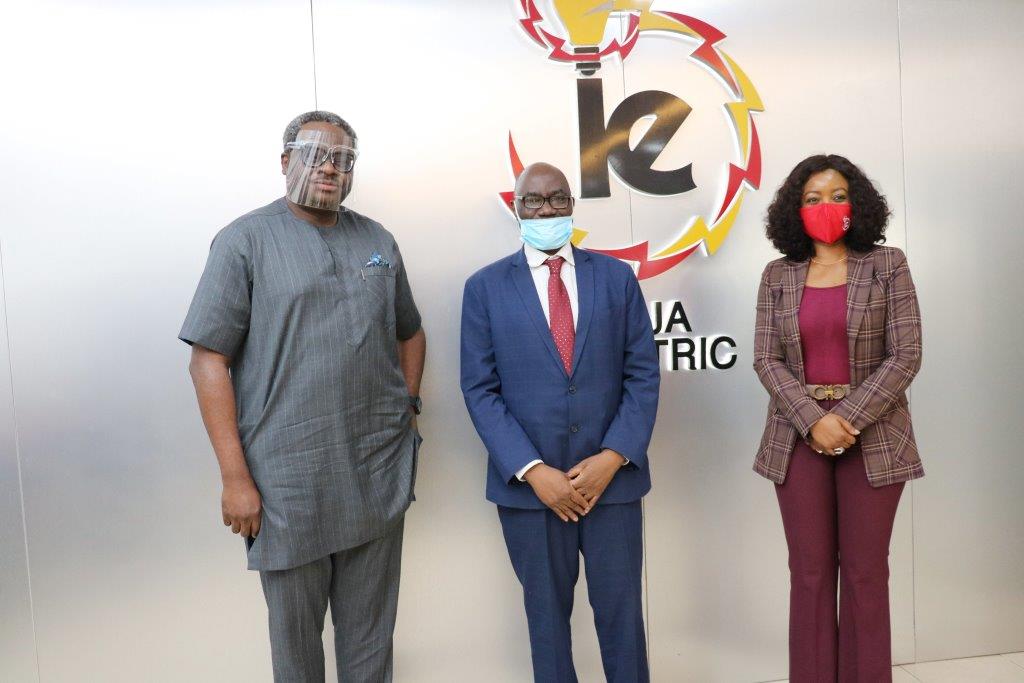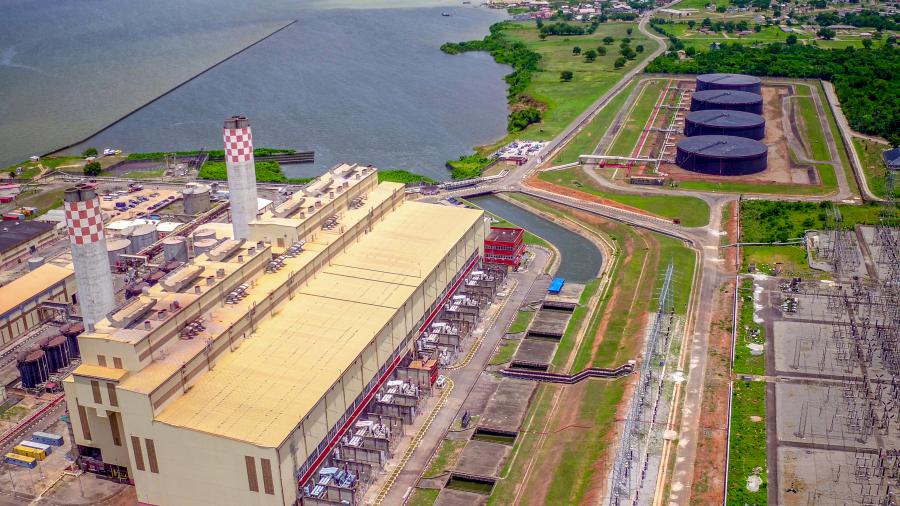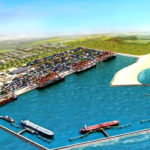General
Why Power Sector Privatisation in Nigeria has Failed—Egbin Power Chairman

**Targets 5000MW Generation in 5 Years
By Dipo Olowookere
Egbin Power Plc is the largest privately owned power generation company in Sub-Saharan Africa and accounts for over 20 percent of power generated in Nigeria.
In this interview, Mr Kola Adesina, Chairman, Egbin Power Plc speaks about the firm’s experience post privatisation, expansion plans and other issues in the nation’s power sector.
The new management took over the affairs of Egbin in November 2013. Where is the company today in its post-privatization plan
Despite these challenges, we have achieved and exceeded our post-privatization targets. From less than 400MWs, Egbin is generating 1,100 MW and shall hit 1,320 MWs in April 2018. Ordinarily, about 220MW that we began to overhaul should have been back since last year if the N140 Billion we are being owed by NBET had been paid. Now, we are struggling to ramp up our capacity because of liquidity challenges and growing and unsustainable debt. Evacuation of the electricity we generate has been a challenge too. Today, the plant can generate about 1,100MWs, but we cannot evacuate more than 600 MWs, because of frequency issues from the transmission end of the sector. The Transmission Company of Nigeria says the DISCOs are not receiving power. Therefore, they have to drop the load. For Egbin to break even and continue to operate well, we should be evacuating a minimum of 800 MWs every day.
What have you achieved so far
It has not been all smooth sailing. I make bold to say that Egbin has raised the performance bar in the sector through continuing investments in human capital and infrastructure resulting in ongoing drive for sustainable performance and expansion. We have had to contend with policy summersault and operational challenges occasioned by defaults in contractual obligations from Day One, the absence of a cost reflective regime, FOREX variance of over N200 per naira and inflation rate that rose from 8% at takeover to 18-19%, as well as debts owed to us by Nigerian Bulk Electricity Trader, NBET. Therefore, the considerable improvement Egbin has made, using the loan acquired in dollars to provide the infrastructure to generate the electricity, appears lost, because the company has not been able to recover its cost. The loan was in dollars, but power tariff is in the local currency. Therefore, what Egbin has lost between the time of acquisition and today is so depressing. The company has lost over 200% from each Naira invested in the acquisition of the plant. However, we remain committed to the project of lighting up Nigeria, this is what motivated our acquisition bid and we will most certainly surpass our targets ultimately.
How do you deal with debts owed by government agencies
Ordinarily, that’s simple! Just ask all MDAs to have prepaid meters. With that, those that have credits on their meters would have electricity. Once the credit is exhausted and no replenishment, then no electricity. I believe the government is doing its best in terms of getting the MDAs debts settled, but they can still do more to support a metering arrangement that will make payment by the MDAs seamless whilst accelerating ongoing efforts at settling the legacy debts. The DISCOs who have so much odds stacked against them also have debts to settle under a system where all the performance enablers have not been provided. The same DISCOs would be told not to raise the tariff beyond a certain threshold when you know the critical parameters that produce the tariff are not right, and as such the real tariff is not being charged. Yet, the authorities and all stakeholders acknowledge that money is required to upgrade the transformers, restructure the distribution lines, provide meters to consumers, etc.
How about plans to commence expansion of Egbin 2
We believe in Nigeria. From the beginning, we had articulated a vision to bring light to Nigeria. As part of that vision, we said from Day One that we will double the capacity of Egbin. But, how do you do that with all these challenges, including serious liquidity crisis, uneven playing field, policy summersault by government and mounting debts. The DISCOs would want to distribute electricity. But, they are limited by the tariffs and the differentials in the agreements they signed and the ones being implemented. They need all the enablers in place to perform optimally. We are determined to forge head believing that everything would come together soon.
Are you going to look from private capital to forge ahead
Obviously, that’s what we are doing.
So, where are you looking at
We have been engaging several partners in the quest for raising more capital. We are currently in discussions with some respected International organisations on various partnership models.
Where would that take you to
That would give us 3,120 MWs in four years’ time. But, we hope to attain a 5,000MW capacity in the next five years. Beyond Nigeria, we are making forays into other parts of Africa, where we plan to have strong footprints under the Sahara Group Electrifying Africa initiative. We have gone to Tanzania. We are making efforts to get into other nations we see as hubs. Recently, the Bureau for Public Enterprises said about 37% of privatized entities since its inception are not working. Nigerians say most of these entities may be in the power sector. Perhaps this is the best way to start.
What’s your view about the state of the sector today
At the moment, the power sector could do with more collaboration and synergy among all stakeholders to consolidate and enhance the gains from the privatization exercise.
How do you mean
The challenges in the sector are not only well known, but well documented. The system is not properly aligned to deliver service as desired. The sector is a value chain including all the players – gas suppliers, electricity generation, transmission and distribution companies. All stakeholders need to align properly to deliver electricity constantly to consumers. Today, a significant increase in gas supply has resulted in a ramp up in electricity supply from most of the power generation companies. Equally, there is significant growth in transmission capacity. Most the transmission projects previously uncompleted have now been completed. The wheeling capacity of transmission has improved proportionately to about 7,000 megawatts, MW of electricity. But, there’s a wide gap in what we are delivering. That’s where the challenge is. Electricity business is a global business. It’s nothing unique to Nigeria. The variables and enablers are known globally. There must be gas availability in the desired quantity and what can be piped from the location it is produced to the power plant. As long as one can do that optimally, there will be availability of electricity. The generation company must also have the capacity to take the gas and use in producing the power for the transmission company to be able to give the various distribution entities. But, it is evident from the state of the industry today that there are gaps. From the gas suppliers, a lot of money is invested in the development of gas fields, provision of infrastructure and supply facilities. They would need to recover their costs. The moment they cannot recover their investment, the appetite to continue to develop the gas fields would drop. To survive, they would begin to look for alternative markets where gas can be economically priced. From the generation perspective, the GENCOs import most of its machines and spare parts used in generating electricity. Again, don’t forget electricity is a regulated business in the country. There is a document called multi-year tariff order that puts into context different parameters for the tariffs charged by the GENCOs, Transco and DISCOs. The day the tariff is lower than the cost of production in the entire value chain, failure begins to set in. That is the position we have today in the Nigerian power sector. The gaps we are seeing is regulatory in nature, because the system is completely regulated, in terms of the standards, quality, pricing and operators activities. Pricing relates directly with availability of liquidity. If the commodity is appropriately priced, the production process would be oiled to continue to produce.
What do you think needs to be done to move to the next level
We need to dimension in the fullest essence possible what it would take to supply electricity – in terms of technical, legal, commercial, regulation, pricing, liquidity, infrastructure, spare parts and equipment, etc. When the market has been properly dimensioned, in terms of requirements for gas-fired, hydro and renewable plants, along with all the enablers in the true state they should be, all parties would then agree on each of their roles. Government should be committed to face the critical parameters involving monetary policies on interest rates on loans, exchange rate and inflation rate. These could be pegged at a certain levels to allow the power sector bring in the required infrastructure. But, we need to quickly dimension the issue of pricing for the sector to have stability in supply.
If you were to be government, what would you do to make the sector work
If government wants to industrialize Nigeria, it can say the cost of goods and services should not be high. A critical component of the analysis to achieve that agenda would be adequate electricity supply as a policy. I will say goods and services must be made to be competitive to allow export, or encourage industrial users of electricity to activate the country’s economy. With that, I would have aligned the country’s energy policy with industrial policy, by bringing down cost in order to unleash industrialization. Again, I would ensure that government helps to reduce the inefficiencies that make operators unable to provide cost-effective electricity. Government should not default in obligations.
If you were to adjust the regulatory environment, which area would you focus on
A regulator’s job is made easier under a climate of reasonable certainty. Where there is high degree of uncertainty, regulatory functions becomes almost impossible. Today, we have a seemingly better regulatory environment, despite challenges here and there. In the past we had significant policy summersault that did not allow for adequate planning. There shouldn’t be any disconnect between policy and regulation.
What about the issue of tariff structure for gas supply
There are three strategies here. Total energy driven market that allows costs to be fed in and priced, with the regulator’s role only to ensure that nobody makes excessive profit. But, free market is not practicable now. On the other hand, I will say: Let government provide these services. But, we know government alone cannot provide these services. This is where the public-private partnership comes in. Government can say the entire value chain of the energy sector is the only way Nigeria could become economically great. Then government could say: How do I help the players deliver electricity to consumers efficiently, effectively in a sustainable manner. The value chain starts with gas supply for the thermal plants. Without gas supply the entire value chain is useless. Government needs to sit down with everybody in the sector and dimension the requirements for the sector to succeed and accept the incremental stages the sector will go through and how to get there. After that, we can look at the financial and investment sides for the industry to have commercially viable price that would give the desired support and the expected result. Then, the realities of all the parties would be documented in a masterplan that would drive the entire energy sector value chain. Then, there must be that commitment to agreements. I always like to adopt an holistic and unified approach in looking at this issue. That is what is required to make the system work well. There must be regular gas to generation side of the value chain to deliver power optimally. Gas must not treated in isolation. Everything that would enable more electricity to be delivered to consumers must be resolved holistically. The more GENCOs are able to deliver power, the more money they make. This is why Egbin 2 expansion project is in the works to position the nation’s largest power plant for the growth we envision in the power sector in Nigeria and across the continent.
Privatization of the power sector was seen as the magic bullet that would change everything
Wrong.
Why did you say that
Because the Nigerian power sector is like the human body. When one has headache, it’s because of certain misalignment of one body organ against another, for which the headache is just a symptom. If one buys a pain reliever to treat the headache, one would be engaging in self-deceit. The proximate cause of the headache has not been dealt with. Providing half solution is worse, as is being done today. If one does not know the cause of the problem, chances are that one would be running around in circles, looking for scapegoats. Everybody in the power sector has been looking for who to blame for the problems. Nobody has taken time to know what the proximate cause of providing stable electricity in Nigeria is. The truth is simply that there is a serious misalignment in the system. This is where the problem is. The day there is an alignment of all the relevant players and elements in the power sector working together in synergy, electricity will become available on a regular basis.
But privatization seems not to have solved our problems
Yes, because of the misalignment I have talked about. Yet, in Egbin Power station where I am the Chairman, when it was privatized, it was generating about 400 MWs of electricity. Today, Egbin is generating 1,100 MW. In terms of contribution to the national grid, Egbin has increased its capacity significantly post-privatization. Without government putting in any money, the company has been able to get funding that has lifted the plant from what it was to what it is today. But, the mistake that was made by government after privatization was that the amount harvested from the exercise should have been reinvested in the system for the upgrade of the infrastructure. If government, with all the resources at its disposal, handled the system for over 53 years and could not provide all the infrastructure and meter all the customers, how would the same government expect the private sector to do all that in just five years of privatization, even with a growing population?
General
Anambra Moves to Curb Erosion Menace
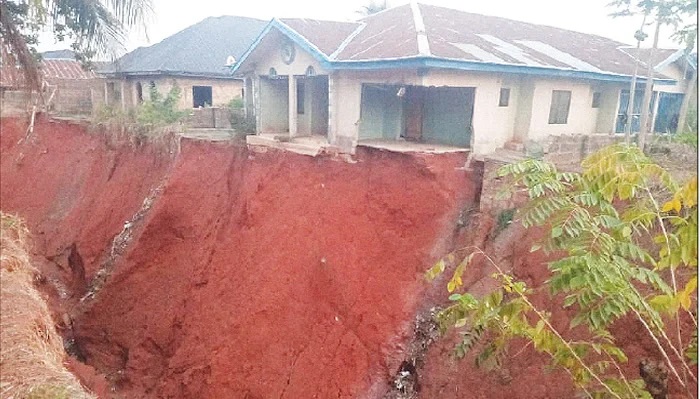
By Adedapo Adesanya
Anambra State Executive Council (ANSEC), under Governor Charles Soludo, has taken a bold step to address the pressing issue of erosion in the state, while also recovering government lands and awarding strategic projects aimed at boosting the state’s economy and improving the quality of life of its citizens.
The Commissioner for Information, Mr Law Mefor, made this known after the 25th ANSEC meeting held recently at the Lighthouse, Awka.
He revealed that the meeting noted with grave concern the existential threat posed by erosion in Anambra, citing the careless actions of communities and regulatory bodies that have disregarded environmental regulations.
“The council has decided to step up enforcement measures to force individuals to build and manage storm waters from their houses and for communities to follow specific guidelines, such as building erosion barriers and excavating sand only in designated locations,” Mr Mefor stated.
He emphasised that the government will not hesitate to take stern action against individuals and communities that fail to comply with environmental regulations.
To address the issue, the government will enforce strict adherence to environmental regulations, mandate the construction of erosion barriers and proper sand excavation practices, and collaborate with relevant agencies to hold those responsible for the erosion menace.
It is also confident that with the support of the people, it will overcome the challenges posed by erosion and achieve its vision of making Anambra State a destination where economic and business activities thrive.
Furthermore, the council has resolved to form a committee to reclaim government lands in and around Anambra State that have been intruded upon and built upon without permission.
“The government will not stand idly by while its lands are being grabbed and misused. We will take all necessary steps to recover these lands and ensure that they are used for the benefit of the people of Anambra State,” Mr Mefor said.
ANSEC has also awarded several strategic projects aimed at enhancing the state’s infrastructure development.
The projects include the provision of a water supply to the Ekwulobia Flyover Bridge Fountain and the ornamental garden for Double NC Construction & Logistics Ltd; the installation of a 3-way traffic light, including pedestrian lights, at the Ifite-Amenyi intersection within the Awka metropolis to S.N.U. Ventures, and the supply and installation of two 10 kVA inverters with 15 kW lithium batteries at the Anambra State Civil Service Commission Building in Awka to Kennolly Enterprises.
Others include the supply and installation of transformer substations at Nnewi and Umueze-Anam communities for Aries and Gold Ventures Limited, and Aljovic Construction Limited; and the landscaping of the car park for the Trauma Centre at Chukwuemeka Odumegwu Ojukwu University Teaching Hospital (COOUTH), Amaku, Awka, for Triseconds Resources Limited.
General
Dangote Refinery Commences Free Delivery of PMS January 2026
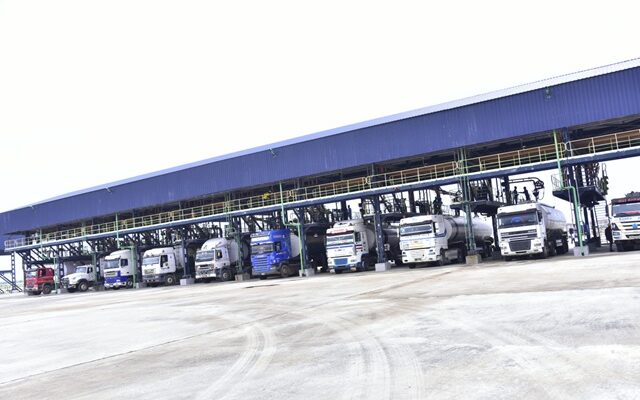
By Modupe Gbadeyanka
The free delivery of premium motor spirit (PMS), otherwise known as petrol, across the country by the Dangote Petroleum Refinery will finally begin in January 2026. This was earlier scheduled for August 2025
This move, according to the Independent Petroleum Marketers Association of Nigeria (IPMAN), will bring down the price of the product in Nigeria.
The group has, therefore, urged all its members nationwide to patronise the Lagos-based private oil facility because it offers the best affordable price for all marketers.
Dangote Refinery has agreed to directly supply PMS to registered members of IPMAN, according to a statement signed and issued by the organisation’s president, Mr Abubakar Maigandi Shettima.
At a press conference held in Abuja yesterday on recent happenings in the oil and gas sector, IPMAN also applauded the support of the Chairman of Dangote Petroleum Refinery, Mr Aliko Dangote towards the federal government, which it noted has become evident in the regular reduction of the petroleum pump price.
“The association has the highest percentage of the supply chain of the PMS downstream sector, controlling over 80 per cent of the petrol retail market. We therefore declare that there will be no gap or scarcity in PMS supply to Nigerians.
“We are also excited at the recent agreement by the Dangote Refinery to begin the supply of PMS products directly to registered IPMAN members, and its free delivery to our filling stations anywhere and everywhere in Nigeria which will commence in January 2026.
“This will again, certainly lead to further decrease in the pump price of the products at our filing stations.
“Therefore, I am calling on all IPMAN members nationwide to prioritise patronising the Dangote Refinery in their purchase of PMS products, as they already offer the best affordable prize for all marketers today,” the group stated.
“At IPMAN we have no doubt as to the viability of the oil and gas policies being initiated by the federal government, and we have ceaselessly called and sought for enhanced cooperation across all levels of governance in the oil and gas sector. Hence, our repeated persuasion to always partner the Dangote refinery, to ensure the steady availability of PMS products.
“The focus of the Dangote & IPMAN partnership, has always been geared towards making life better for Nigerians. And of course, this blooming partnership would never have been possible without the pragmatic leadership of President Bola Tinubu, and his sound judgment in readjusting the leadership of the NMDPRA and the NUPRC.
“Our position has always been to deepen domestic refining in order to eradicate imports of petroleum products. Continuous import is NOT an acceptable parallel business model, because issuing import licenses recklessly distorts market dynamics, drains foreign exchange, enthrones poverty, destroys jobs, and scares potential investors away,” Mr Shettima was quoted as saying in the statement.
General
Swedfund Puts Down $20m for Green Business Growth in Africa

By Aduragbemi Omiyale
About $20 million has been put down by Swedfund to support efforts that limit climate change in Africa and help communities adapt to its effects.
The funds would be deployed by the Helios Climate, Energy, Adaptation and Resilience (CLEAR) Fund to back African companies that reduce emissions, strengthen resilience and create green jobs.
Swedfund’s investment is expected to contribute to significant cuts in greenhouse gas emissions and to help businesses and small farmers adapt to a changing climate.
The investment strengthens Swedfund’s work to drive a sustainable and inclusive green transition in Africa.
Africa contributes less than 3 per cent of global carbon emissions but faces some of the most severe climate impacts. At the same time, the continent’s energy demand is expected to triple by 2050.
Swedfund’s investment in Helios CLEAR will help channel capital to businesses that drive low-carbon growth in areas such as renewable energy, sustainable transport, climate-smart farming, efficient use of resources and digital climate solutions.
“By investing in this sector, we can reduce emissions, build resilience and create green jobs, all vital for sustainable growth that benefits more people.
“Africa currently receives only a small share of global climate investment, yet the potential for climate-smart business is enormous.
“Through Helios CLEAR we help build the next generation of African climate-focused businesses,” the Investment Director for Energy and Climate at Swedfund, Ms Gunilla Nilsson, stated.
Helios CLEAR Fund is a Pan African growth equity fund managed by Helios Investment Partners, one of Africa’s leading private equity firms.
The fund targets investments that deliver measurable climate mitigation and adaptation outcomes. The fund is supported by multiple development finance institutions.
-

 Feature/OPED6 years ago
Feature/OPED6 years agoDavos was Different this year
-
Travel/Tourism9 years ago
Lagos Seals Western Lodge Hotel In Ikorodu
-

 Showbiz3 years ago
Showbiz3 years agoEstranged Lover Releases Videos of Empress Njamah Bathing
-

 Banking7 years ago
Banking7 years agoSort Codes of GTBank Branches in Nigeria
-

 Economy3 years ago
Economy3 years agoSubsidy Removal: CNG at N130 Per Litre Cheaper Than Petrol—IPMAN
-

 Banking3 years ago
Banking3 years agoFirst Bank Announces Planned Downtime
-

 Banking3 years ago
Banking3 years agoSort Codes of UBA Branches in Nigeria
-

 Sports3 years ago
Sports3 years agoHighest Paid Nigerian Footballer – How Much Do Nigerian Footballers Earn





